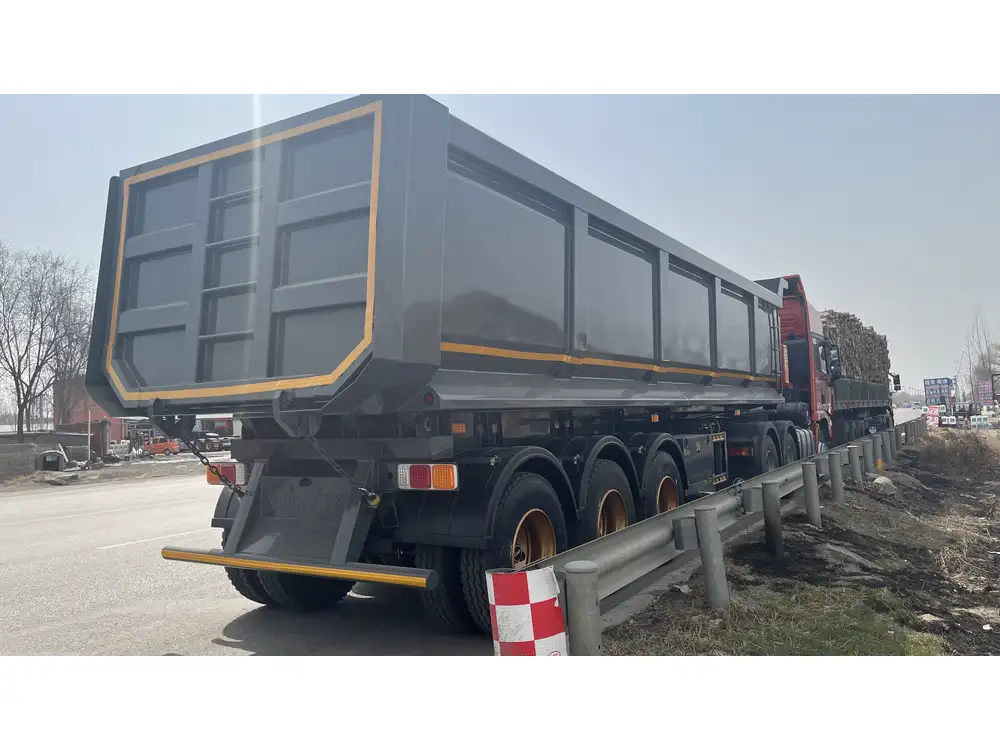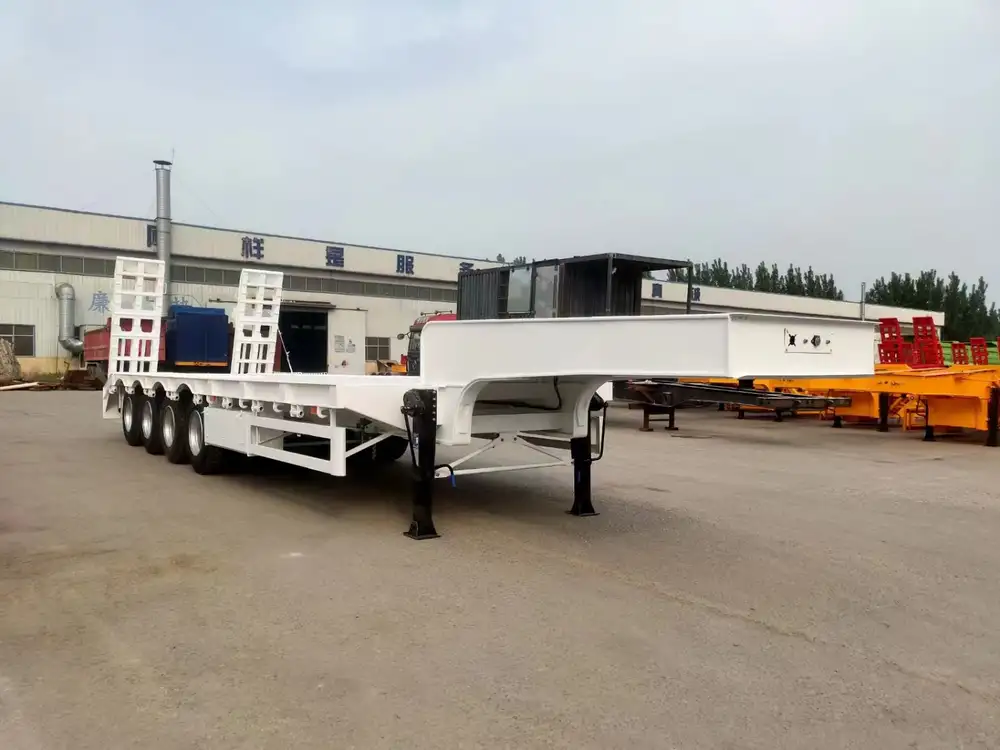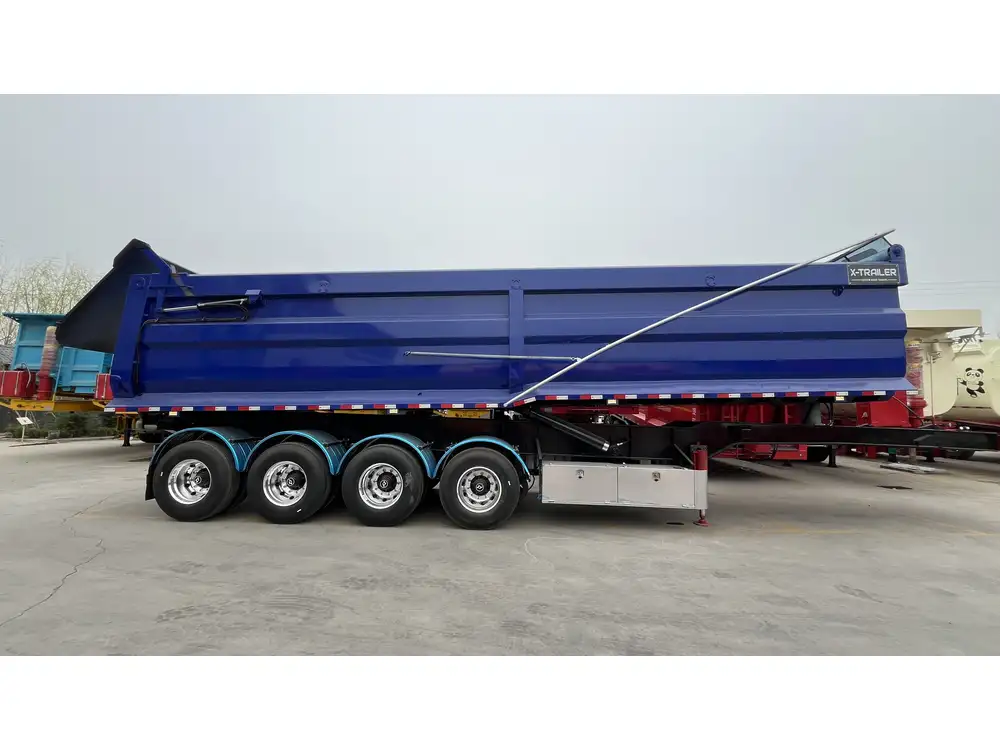Dumping a trailer effectively is an essential skill for semi-trailer operators, ensuring both safety and efficiency in every operation. Whether you’re working in construction, agriculture, or any sector that involves heavy lifting and transport, understanding the ins and outs of your trailer can significantly improve productivity. This guide delves into the complexities of dumping a trailer while integrating best practices, safety protocols, and troubleshooting tips that every operator should know.
Understanding Your Trailer: Types and Components
Types of Dump Trailers
End Dump Trailers
- Description: Features a hydraulic lift that tilts the trailer from the rear.
- Applications: Ideal for loose materials like sand, gravel, or mulch.
- Advantages: Quick unloading, especially in tight spaces.
Side Dump Trailers
- Description: Unloads cargo from the sides using hydraulic systems.
- Applications: Useful for larger and heavier materials, such as dirt and rocks.
- Advantages: Offers greater stability during unloading.
Roll-Off Trailers
- Description: Designed for moving large containers that can be rolled off.
- Applications: Often used in waste disposal.
- Advantages: Efficient for transporting large quantities of waste.

Essential Components of a Dump Trailer
| Component | Function |
|---|---|
| Hydraulic Cylinder | Lifts the trailer to initiate dumping. |
| Bed | The flat surface where the cargo is loaded. |
| Tipping Mechanism | Controls the angle and speed of the dump. |
| Frame | Provides structural integrity and support during operations. |
Step-by-Step Process on How to Dump a Trailer
Pre-Dumping Preparations
Inspect the Trailer
- Check the hydraulic system for any leaks.
- Ensure the bed is free of blocks and secured for the dump process.
- Confirm the trailer connections to the truck are secure.
Choose the Right Location
- Select a flat and stable surface to avoid tipping.
- Ensure that the area is clear of people and obstacles.
- If working near roads, use appropriate signage to alert drivers.

Dumping Process
Positioning the Truck
- Align the truck and trailer so that the bed is facing the designated dumping area.
- Engage the parking brake on the truck to prevent any movement during the dump.
Engaging the Hydraulic Lift
- Turn on the hydraulic system using the control switch or lever.
- Gradually lift the trailer bed, monitoring the pressure gauge to avoid exceeding recommended limits.
Achieving the Desired Angle
- Adjust the tilt of the bed to remove the load effectively.
- Allow the material to flow out evenly, avoiding heap formations that can cause the trailer to become unbalanced.
Post-Dumping Procedures
Lowering the Trailer
- Once the cargo is unloaded, gradually lower the trailer back to its original position.
- Monitor any remaining material and ensure the bed is securely lowered.
Conduct a Post-Dump Inspection
- Inspect for any signs of damage or malfunction in the hydraulic system.
- Clean out remaining debris to prevent corrosion and maintain trailer integrity.
Document the Load
- If applicable, note down the materials unloaded for inventory and tracking purposes.
Common Issues and Troubleshooting

Hydraulic System Failures
Symptoms:
- The trailer doesn’t lift or lower properly.
Solutions: - Check for hydraulic fluid leaks.
- Inspect hoses for cracks or disconnects.
- Ensure the pump is functioning and get repairs when necessary.
Load Shifting During Dump
Symptoms:
- Unwieldly dumping or difficulty in unloading.
Solutions: - Ensure even loading of materials.
- Utilize load control devices such as ratchet straps or nets.
Structural Damage to the Trailer
Symptoms:
- Signs of bending, twisting, or cracks in the frame.
Solutions: - Conduct regular inspections.
- Refrain from overloading beyond the trailer’s capacity.

Best Practices for Safe Trailer Dumping
Regular Maintenance
- Schedule routine checks on hydraulic and structural components.
- Lubricate moving parts to ensure smooth operation.
Training and Certification
- Operators should undergo training to understand the mechanics of the hydraulic system and safe dumping procedures.
Use of Personal Protective Equipment (PPE)
- Operators should use hard hats, steel-toed boots, and safety glasses during operations.
Understand Weight Limits
- Always abide by the manufacturer’s specified weight limits for safe operation.
Monitor Weather Conditions
- Avoid dumping in adverse weather conditions such as strong winds or heavy rain.
Frequently Asked Questions (FAQs) About Dumping Trailers
What is the maximum load capacity for a dump trailer?
The load capacity of a dump trailer varies widely based on its make and model, generally ranging from 5,000 to 30,000 pounds. Always refer to the manufacturer’s specifications for accurate guidelines.

Can I dump while the truck is moving?
No, dumping while the truck is in motion is highly unsafe and can lead to accidents, overload inconsistencies, and possible damage to the trailer.
What should I do if my trailer won’t lift?
If the trailer fails to lift, immediately turn off the hydraulic system and investigate for issues such as fluid levels, leakages, or malfunctions in the pump. It is crucial not to force or push the system beyond its limits.
Conclusion: The Art of Trailer Dumping
Mastering the skills required for dumping a trailer is paramount for any semi-trailer operator. A combination of preemptive checks, an understanding of trailer mechanisms, and a solid grasp of safety protocols can transform a potentially hazardous task into a streamlined process. Equipping yourself with knowledge and adhering to best practices will not only ensure safety but also enhance productivity across various sectors. The art of dumping a trailer, when executed correctly, allows you to maximize efficiency while minimizing risks—ultimately leading to improved operational success.
By continually educating ourselves, maintaining our equipment, and adhering strictly to safety protocols, we can navigate the complexities of trailer dumping with confidence and precision. Remember, the goal is not just to dump but to do it smartly, safely, and effectively.



